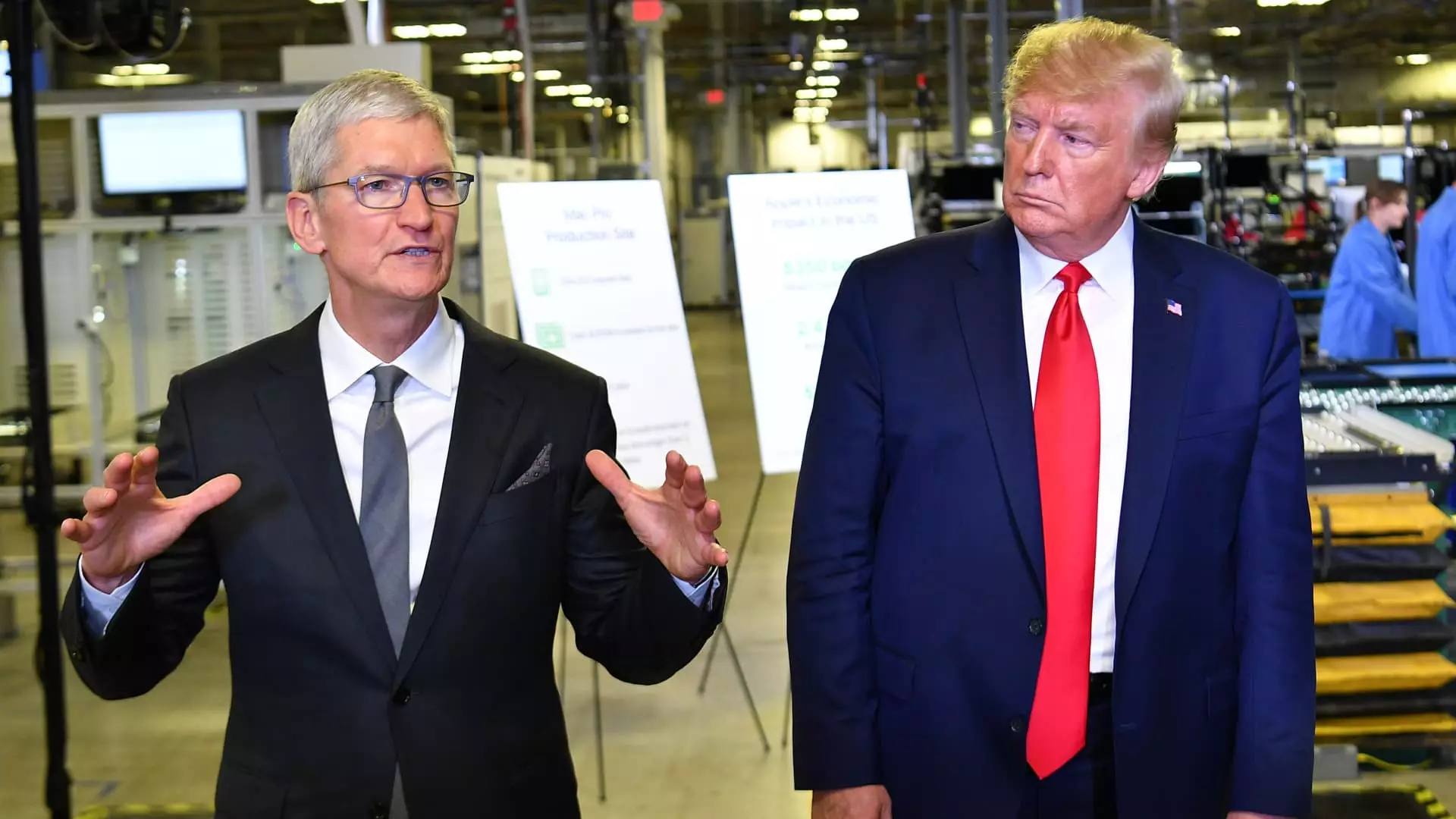In a bold move that underscores the deepening entanglement between politics and business, former President Donald Trump took to social media to declare that Apple Inc. must adopt a more steadfast approach to domestic manufacturing. In a post that sent shockwaves through the market, Trump warned that the tech giant could face a staggering tariff of at least 25% on iPhones manufactured overseas. This tweet is not merely a casual remark; it is a deliberate tactic designed to challenge Apple CEO Tim Cook’s strategic decisions regarding global supply chains.
Trump’s insistence that iPhones be made in America echoes a broader narrative he pushed during his presidency, focusing on the need for humbling domestic production. Given that a significant portion of Apple’s production is currently based in China, the stakes are high: an overzealous shift in manufacturing could elevate the average cost of an iPhone to an eye-watering $3,500, according to some Wall Street analysts. For a product that currently retails around $1,000, this is a considerable risk that could alienate millions of consumers.
Analyzing Apple’s Response: A Balancing Act
At the heart of Trump’s ambush lies a fundamental challenge for Apple: balancing the demand for cheaper production in Asia against the need to appease a volatile political climate dominated by protectionist sentiments. Apple, while trying to adapt to these pressures, has already begun shifting some manufacturing operations to India—an initiative partly motivated by the country’s growing friendship with Washington. However, this move is fraught with complications.
Moreover, as the company maneuvers between domestic production and international supply chains, analysts note that any transition to U.S. manufacturing would not only inflate consumer prices but could also lead to supply shortages. Given that Apple’s flagship phone has become synonymous with high-quality technology and accessibility, pricing it beyond the average consumer’s reach could severely impact its market positioning.
The Geopolitical Landscape: Apple Caught in the Crossfire
Trump’s recent statements have unveiled deeper issues at play within U.S.-China relations, particularly in the technology sector. This echoes prior trade disputes where Apple found itself navigating delicate waters, relying on Trump’s disposition to maintain favorable trade terms. When the threat of tariffs loomed ominously in 2019, Trump and Cook’s rapport resulted in Apple’s exclusion from certain levies. However, this protectionist era marked by renegotiated agreements appears to be giving way to renewed tension as Trump escalates his rhetoric across platforms.
Compounding the geopolitical landscape is the backdrop of weakening demand in China for Apple’s offerings. With production challenges impending from tariff threats, there exist legitimate consumer concerns regarding the resilience of Apple’s business model. To counteract flipping demand, Apple has enhanced trade-in incentives within the Chinese market, signaling a responsive, if not reactive, approach to consumer sentiment, a strategic necessity amid complex geopolitical pressures.
The Bigger Picture: The Future of U.S. Manufacturing
Apple is not merely a single corporation wrestling with governmental demands; it stands as a symbol of American innovation at a crossroads. As the company pledges a monumental $500 billion investment into U.S. development including AI technologies, it raises a question: is this enough to placate a government seeking strict adherence to its nationalist manufacturing ideology? While the investment sends a positive signal about future prospects for American jobs, it remains to be seen whether this will lower the chances of impending tariffs or if it will create an illusion of goodwill while traditional production continues to navigate overseas waters.
The landscape of U.S. manufacturing is in continuous metamorphosis, straddling the complexities of global trade and the push for localization. Decisions made in boardrooms in Cupertino impact not just Apple’s bottom line, but resonate throughout entire economies. With each swing of Trump’s hammer on tariffs, the fabric of the tech industry frays further, demanding not only strategic foresight but a level of adaptability previously uncharted in corporate governance.
In this tumultuous environment, where the lines between global commerce and national interests blur, Apple’s steps will be watched closely; not just for their financial implications but as markers of a deeper understanding of modern manufacturing challenges. As we embark on this new chapter charged with complexity, one thing remains clear: Apple, and indeed many other corporations, must quickly and decisively navigate the perfect storm unfolding on the international stage, lest they become victims of their own operational hesitations.


Leave a Reply